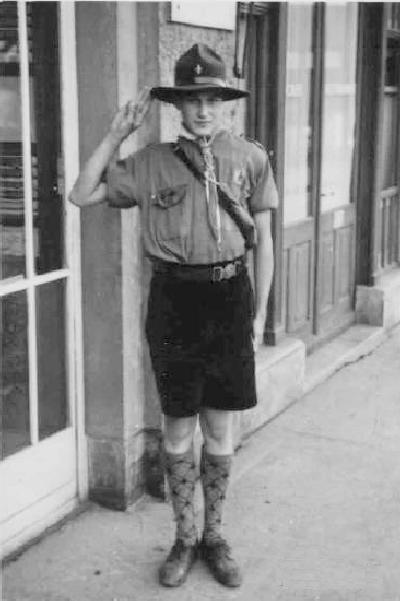
Figure 1.--This is a Yugoslav Scout. The photograph is unidentified, other than the bo was a Serb. We are not sure when the photograph was taken, but it looks like the 1930s to us. |

|
We have very limited information about Yugoslavia. There were a range of nationalist organizations, but this is very complicated because many were ethically based and not national organizations. We have some information about the Boy Scouts. Scouting was founded in Serbia during 1911. We have less information about Croatia, Bosnia and other areas of what came to be Yugoslavia in 1919. Scouting existed in Yugoslavia during the inter-War era, but ethnic tensions presumably affected the Scouting movement. After the German World War II invasion, Yugoslavia was partinioned between Germzany, Italy, and their Balkan partners. Croatia became a NAZI ally. Presumably they had some form of NAZI youth group. Ther may have been other Fascist groups formed in the other areas occupied Yugoslavia. The Hitler Youth was established in the area of Sklovenia annexed to the Reich. Scouting was banned and with a raging insurgency it would have been dangerous for boys to wear any kind of Scout unifiorm. After the War, Tito and his Communists established a Communist dictatrorship with the Young Pioneers as the only permissible uniformed youth group. Yugoslavis in the 1990s split apart in a series of vicious wars. We are unsure about the youth groups active in each of the countries whichg emerged from Yugoslavia. Presumably Scouting is the principal one.
We have very limited information about Yugoslavia. There were a range of nationalist organizations, but this is very complicated because many were ethically based and not national organizations. I believe there were also organizations with religious and political foundations and well as groups with over-lapped these various elements. Building a natinalist youth organization in such a divided country would have been difficult, but there were many different youth groups in the various constiuent parts of Yugoslavia. After the German World War II invasion, Yugoslavia was partinioned between Germzany, Italy, and their Balkan partners. Croatia became a NAZI ally. Presumably they had some form of NAZI youth group. Ther may have been other Fascist groups formed in the other areas occupied Yugoslavia. The Hitler Youth was established in the area of Sklovenia annexed to the Reich.
We have some information about the Boy Scouts. Scouting was founded in Serbia during 1911. We have less information about Croatia, Bosnia and other areas of what came to be Yugoslavia in 1919. Scouting existed in Yugoslavia during the inter-War era, but ethnic tensions presumably affected the Scouting movement. Scouting was banned after the NAZI invasion and with a raging insurgency it would have been dangerous for boys to wear any kind of Scout unifiorm.
After the War, Tito and his Communists established a Communist dictatrorship with the Young Pioneers as the only permissible uniformed youth group. The Pioneer organization was actually founded during the War (December 27, 1942. It was a division of the Socialist Youth Union of Yugoslavia. (Serbo-Croatian: Savez pionira Jugoslavije; Slovene: Zveza pionirjev Jugoslavije (ZPJ); Macedonian: Сојуз на пионери на Југославија) was the pioneer movement of the Socialist Federal Republic of Yugoslavia. As was the case in other Pioneer organizations, the Yugoslav Pioniri were aschool bvased program with littkle parental participation. The organization was divided into younger pioneers (7–11 years) and older pioneers (11–15 years). Virtually all Yugoslav chikdren beginning at age 7 years his to join and participate in the Pioneers. The Pioneers Organization published the Male novine magazine. The essential uniform itens were a red scarves (marama) and as navy blue or in some cases wjite caps called Titovka. They had a red star on the front. There was not a firnmal uniform, but the children often wire white shirts for important fubctions. Here there was some variation among the differet republics. Boys often wore navy blue short or long pants. The girls wore blue skirts. White hisieru and black shoes were wirn for soecual occassions. Pioniri sometimes wore traditional costumes from their native regions for some occasions.
We note a group of teenage Yugoslave boys in military uniforms right after World War II and the Communist seizure of power in Yugoslavia. Despite Allied support for Marshal Tito and the partisans during World War II, Tito became perhaps the most vocal and aggressive critic of the West, shooting down Allied planes in the Adriatic and making demands on Italian territories. Tito turned the Adriatic into an early Cold War hot spot. Thousands of anti Communits were arrested an condemned to long prison terms in brutalconcentration camps or sumarily executed by the secret police. We note a group portrait of teenagers in some kind of military youth progrm. The photograph was taken just before Tito's break with Stalin who had decided that Tito was not compliant enough with his orders. We are not entirely sure just what this group was. The boys look about 15-16 years old. It may be a cadet group training future officers. Or it could be pre-military training for all Yugoslav boys. Cadet training before World war II in various countries was generall for a select few, mostly secondary school boys at a time when most children in Europe did not go beyond primary school. Communist countries pursued a more expansive program of youth military training. We just do not yet know enough about Yugoslav schools amd military taining at this time.
Yugoslavis in the 1990s split apart in a series of vicious wars. We are unsure about the youth groups active in each of the countries whichg emerged from Yugoslavia. Presumably Scouting is the principal one.
Navigate the Historic Boys' Youth Group Web Site:
[Return to the Main European Countries page]
[Activities]
[Biographies]
[Chronologies]
[Countries]
[Essays]
[Garments]
[Organizations]
[Religion]
[Other]
[Introduction]
[Bibliographies]
[Contributions]
[FAQs]
[Questions]
[Unknown images]
[Boys' Youth Group Home]
